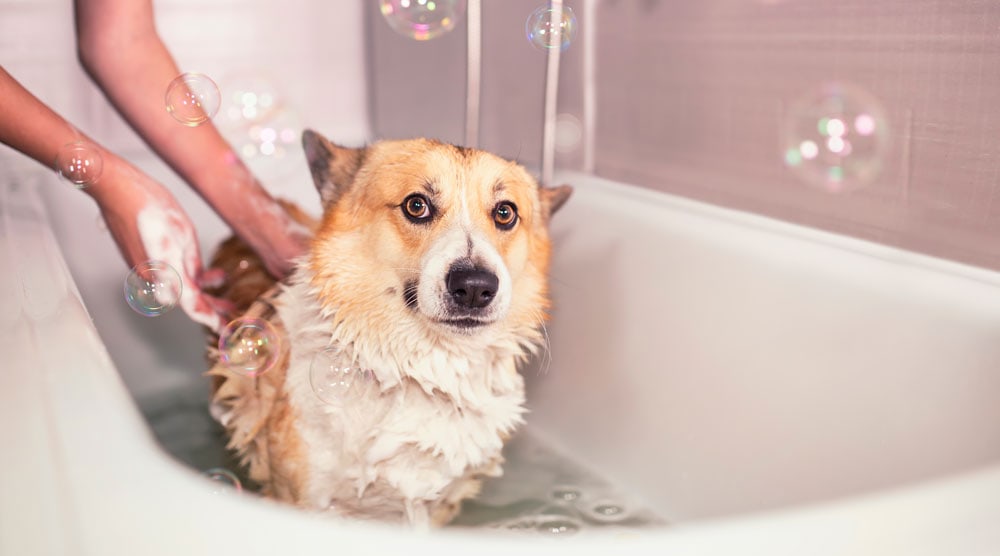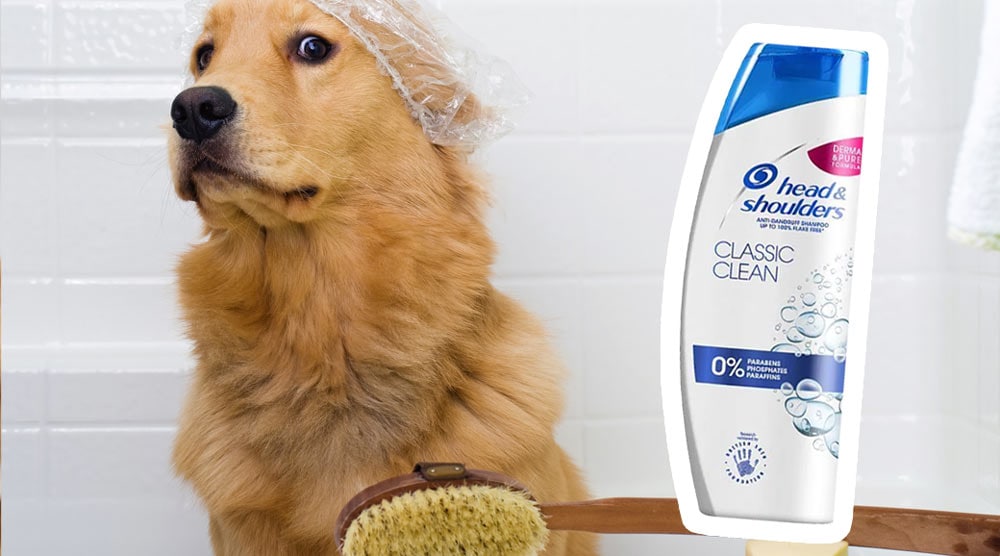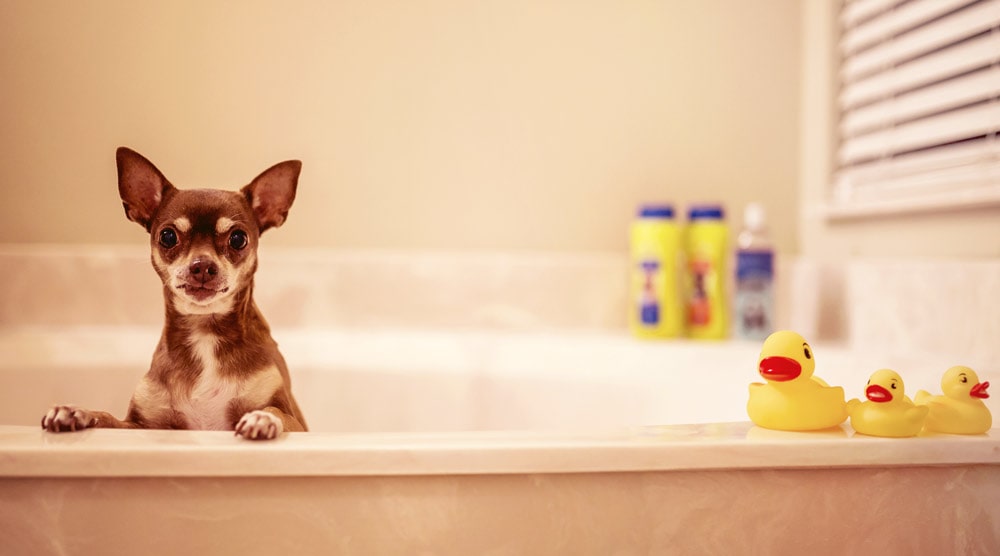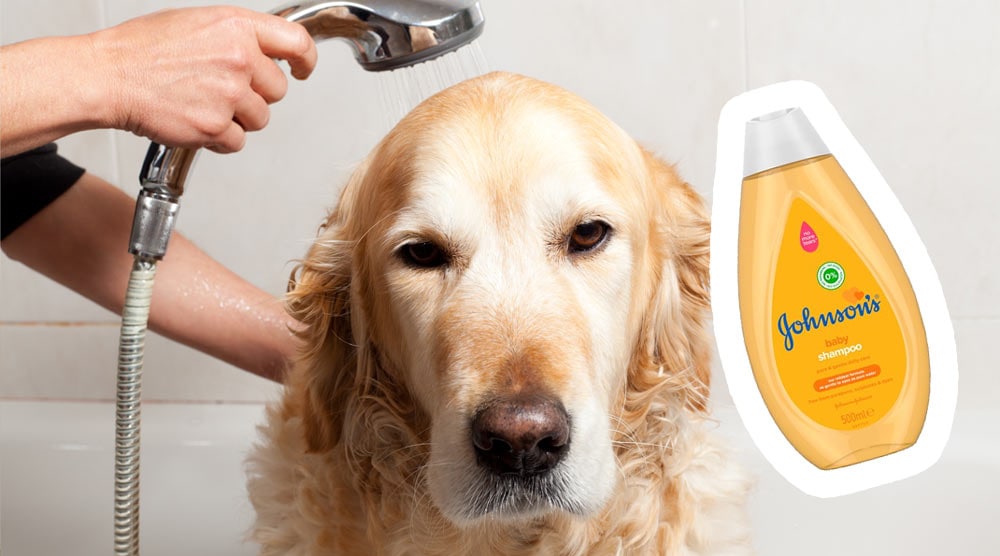Dogs can shiver after a bath for various reasons, including being cold, anxious, or excited. It’s even possible that the dog is reacting to a shampoo ingredient.
In this article, we’ve listed four possible reasons why dogs shiver after a bath. We’ll also help you prevent shivering and discuss how frequently to bathe your dog (hint: more isn’t always better!)
Contents
The Difference Between a Dog Shaking and Shivering
Before you worry about your dog getting cold or anxious, it’s important to know whether they are shaking off or shivering.
When wet, it’s normal for dogs to shake off excess water. A dog can shake off about 70% of the water in its fur in four seconds, making this a highly effective way to get dry.
Your dog will shake off immediately after getting out of the bath. Shaking off is a more pronounced movement than shaking, with the dog flicking their hair back and forth in a controlled motion.
However, if your dog is shaking in a small and uncontrolled way, they probably shivering. Just like humans, dogs shiver to generate heat and warm up.
Why Dogs Shiver After a Bath
It’s important to know why your dog is shivering before you try to prevent it. So let’s look at four reasons they could be shivering after a bath.
1. They Are Cold
The most common reason a dog shivers during or after a bath is that they’re cold. This could be due to the water being too cold, or evaporation drawing heat from the dog’s body.
If your dog is shivering while still in the tub, it could be that the water is too cold. Start with lukewarm water and adjust the temperature as needed, since it will cool off over time.
The bath should stay lukewarm though – don’t use water that’s too hot!
Once your dog is out of the bath, they will usually shake off as much water as possible. The remaining water then evaporates, which draws heat from the dog’s body and causes them to feel cold.
As your dog gets colder, he’ll start to shiver to produce body heat. A small amount of shivering isn’t dangerous, but violent or extended shivering isn’t something you should ignore.
2. They Are Anxious or Scared
If your dog isn’t cold, then shivering could signal that she is anxious, scared, or stressed. This could be due to many reasons, including:
- They’ve had a bad experience in the bath. A prior negative experience can cause your dog to associate bath time with fear. Anything from the water being too hot, to a punishment related to the bath, can form a negative association.
- You’re stressed. Dogs respond to their owner’s energy. If you’re nervous, anxious, and stressed for bath time, your dog will likely be anxious too. Try to have a calm and positive attitude while bathing your dog.
- It’s a new experience. If your dog has never had a bath before, remember it’s an entirely new experience for them. Introduce each step slowly and with positive reinforcement.
- Your pup can’t get a secure footing. If the floor of the tub is slippery, your dog won’t be able to get a proper footing, which can make them anxious. Put a non-slip mat on the tub floor, so they have a stable surface to stand on.
3. They Are Excited
If you’ve ever come home to find your dog trembling with excitement at seeing you, you’ll know that dogs sometimes shake when they’re excited. This is due to adrenaline being released during an exciting moment.
It’s possible that your dog is excited about something after getting out of the bath. For example, she might know there’s often a treat coming as a reward for bathing!
4. They May Be Reacting to Pyrethrin
While it’s rare, shivering after a bath may be due to your dog reacting to pyrethrin. This ingredient is commonly used in flea and tick products, including shampoos.
Pyrethrin usually is very safe for dogs. However, it can occasionally cause a skin reaction, leading to itchiness and a “pins and needles” feeling.
Other symptoms of a pyrethrin reaction can include:
- Whimpering, crying, or vocalizing discomfort
- Extreme itchiness
- Unusual restlessness
- Excessive attempts at scratching their backs
Contact your veterinarian if you think your dog is reacting to pyrethrin.
Is It Normal for Dogs to Shiver After a Bath?
A small amount of shivering can be expected when your dog first gets out of the bath. But a healthy adult dog should be able to quickly regulate their body temperature and stop shivering.
If your dog seems to have trouble staying warm and regulating their body temperature on a regular basis, it could be a sign of a health issue.
These issues can include kidney disease, diabetes, and even heart failure. Talk to your vet if you think your dog is having trouble regulating their body temperature.
Of course, shivering could also be due to the dog being too cold or anxious. We’ll discuss tips for preventing these problems in the next section.

Why Puppies Are More Likely to Shiver After a Bath
Puppies cannot regulate their body temperature as efficiently as full-grown dogs. They also have smaller fat reserves and thinner coats. If you’ve seen puppies huddled together or close to their mother, it’s likely because they are using each other for warmth.
As they get older, puppies can regulate small temperature changes. A bath, however, can cause a significant difference in body temperature.
For this reason, it’s best to avoid bathing your puppy until at least eight to twelve weeks of age. If needed, you can use a warm, damp cloth to clean them until they’re old enough for a bath.
Once they’re old enough, use a shampoo designed for puppy skin and fur.
How to Help a Dog Stop Shivering After a Bath
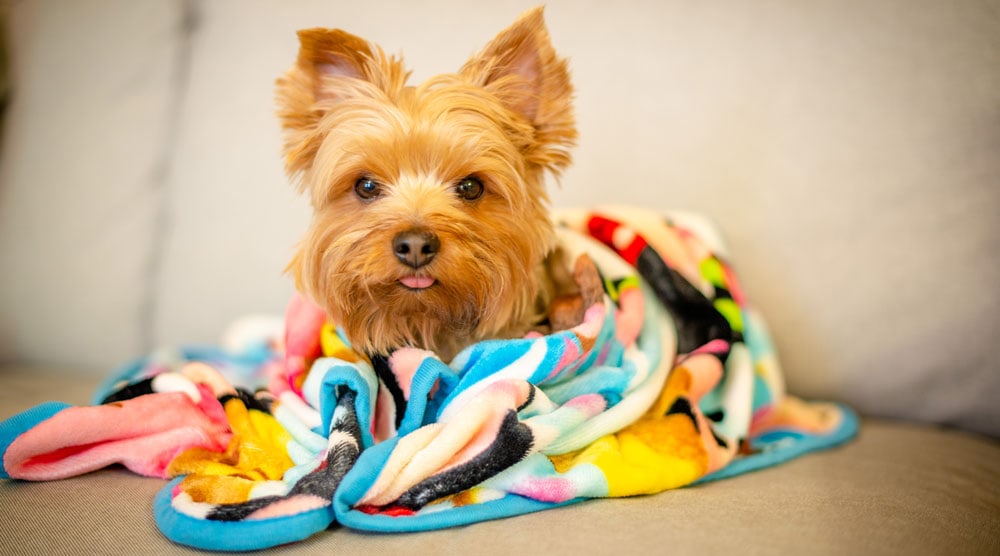
To help your dog stop shivering, you must first understand the cause – whether it’s cold, anxiety, excitement, or even a reaction to pyrethrin.
If Your Dog is Cold
- During the bath, make sure the bath water doesn’t get too cold. Run more water to warm the tub if needed, check the temperature often, and ensure your dog isn’t getting cold or uncomfortable.
- Allow your dog to shake off once they’re out of the bath. While it’s not fun to be on the receiving end of that excess water, dogs need to shake it off before getting too cold. Remember, shaking off is much more effective than towelling.
- Be ready with at least one clean, dry towel after your dog is out of the bath so you can help them dry any remaining water.
If Your Dog is Anxious or Afraid
If you think your dog is shaking from fear at bath time, pay attention to what they are communicating. This isn’t an issue you should ignore, and your dog will need help overcoming their fear.
- Stay calm and provide positive reinforcement with high-value treats. Try rewarding your dog for an initial step, such as just being near the bathtub without water. This process takes time and will need to be repeated over multiple sessions, always making sure your dog is comfortable before moving on to the next step.
- Pay attention to what might be frightening your dog. For example, is it the sound of the water turning on? Or when you open the shampoo? If you can pinpoint the source of what’s making your dog anxious, one small change during bathing could reduce your dog’s anxiety.
- Contact a behaviourist if you’re unsure how to help your dog overcome their fear. They can develop a specific plan for desensitizing your dog to their fear of the bath.
Frequently Asked Questions
How Often Should You Bathe Your Dog?
Dogs don’t need to be bathed as often as many people think. In fact, washing your pup too frequently can strip their coat of its natural oils, which can damage fur and possibly irritate the skin.
When deciding how frequently to bathe your dog, consider their fur length, thickness, skin conditions, and lifestyle.
- For long-haired dogs, four to six weeks is usually a reasonable time between baths.
- For short-haired dogs, six to eight weeks is usually an appropriate time.
Of course, if your dog is visibly dirty or has a bad smell, then you’ll need to bathe them regardless of when they last had a bath.
If your dog has a skin condition such as fleas or a skin allergy, you may need to bathe them more frequently. Consult your veterinarian if you need guidance on how often to bathe your dog.
If your dog gets dirty and needs a bath, don’t hesitate to clean them up. Just keep in mind the bathing frequency that is best for your dog’s breed and avoid overbathing whenever possible.
Summary
A slight shiver after a bath is probably nothing to worry about. But if your dog is shivering because they are cold, anxious, or scared, it’s important to take steps to make the process more comfortable.
Help them dry quickly, have a positive attitude, and stay alert for signs of a product reaction. As always, pay attention to your dog’s body language and what they’re communicating to you at bath time!
Not sure which shampoo to use on your dog? Check out our 10 Best Dog Shampoos for Safely Washing Your Pup’s Hair
